What We’re Learning from Students and Schools in the Age of AI
Across the last few months, the professional learning team has engaged with schools in AI focused programming. Across virtual and in-person workshops, conversations and partnerships, and cohorts and courses, we’re paying attention to what we’re learning from our educator community.
It’s exciting to listen and learn, and we’re reflecting on takeaways that educators and leaders tell us are supporting their schools. It’s not surprising that what we’re hearing reflects much more than just the integration of AI as an idea generator. We’re hearing that effective learning design, whether with or without AI, is rooted in naming enduring priorities, keeping students at the center, and continuing to take a learning stance.
Here’s some of what we’re hearing and experiencing:
Begin with priorities
At the start of our Redesign Homework with AI course we invite participants to begin with an intentional mindset for learning design. What do they want to prioritize in the learning process? What really matters in the student experience?
The replies come back to what is essential in the classroom regardless of AI:
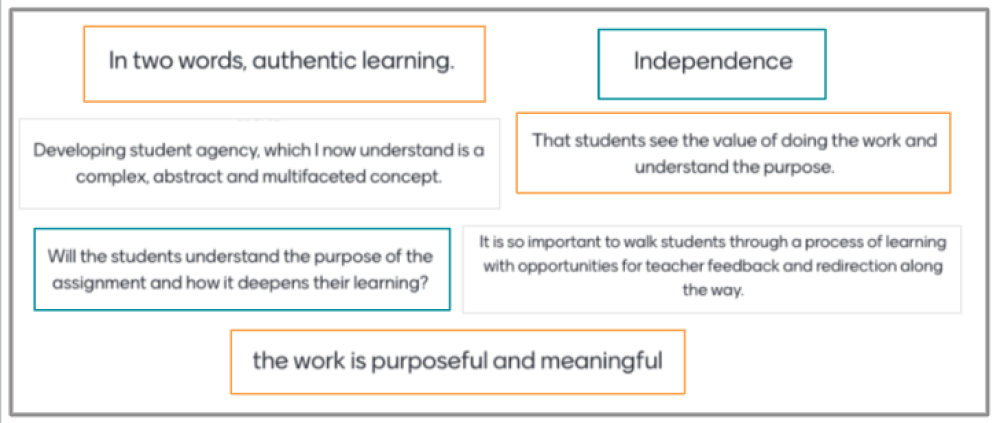
When we drafted our Educator Competencies at GOA, we researched the skills that educators told us were relevant beyond the classroom. What matters twenty years from now? What matters in the student experience no matter what the world throws at us? What are the skills that students need to thrive in an unknown world?
Nowhere in the process did the phrase “Artificial Intelligence” surface and yet, each and every one of those competencies has relevance in the age of AI. As we navigate new digital tools and redesign learning in response, just like the educators we get to learn from and the statements they shared above, we’re coming back to what is enduring. We’re continuing to take The One Thing Approach as my colleague Deep Sidhu writes. With our priorities clear, we can partner with AI not in spite of it--but alongside it.
Keep students at the center
At GOA, we have named our Professional Learning Priority: “We aim to leverage AI as a catalyst for innovative teaching and learning. As we work closely with educators, we collectively envision a classroom landscape where AI doesn't replace, but augments teaching, placing students firmly at the center of the learning process.”
We’re exploring, researching, and soaking up what others are doing to partner with AI in service of developing student agency and deeper learning. We are invested in keeping students at the center.
We’re learning that looks like shifting the planning for learning experiences, like creating choice boards with MagicSchool.ai or using ChatGPT as an example generator. It also looks like leveraging tools to scaffold learning.
We’re especially interested in learning design shifting how students lead their next steps. In our October session of Redesign Homework with AI, Dina ElGhitany of Chadwick School shared a homework prompt redesigned for student agency: “I'm using the [redesign with AI] to change the course of my homework from me being the designer and the holder of knowledge to students being the ones bringing in the knowledge and sharing it with their peers.”
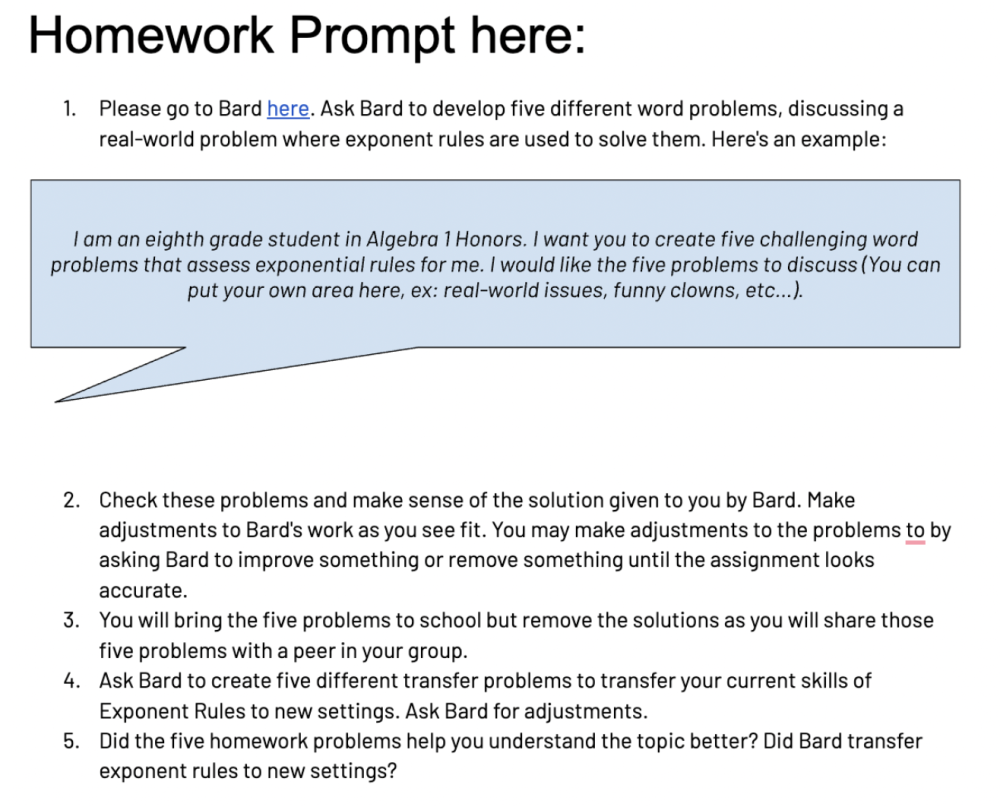
The homework assignment invites students to partner with both the teacher and AI as co-creators, question askers, and reflectors. They are engaged in the deeper work of student-led learning, work that invites them to consider how they will lead their next steps.
Stay in a learning stance
As we respond to questions from schools on integrating AI and develop programming to support educators and leaders, we’re showing up as learners.
For many of our schools and for us at GOA, taking a learning stance means making what other educators are doing and trying as visible as possible. In our experience design, sharing spaces are more important than ever and provide all of us opportunities to borrow ideas, to ask questions, and to inspire.
In Padlets, participants react to tools and share how they might put them into practice:
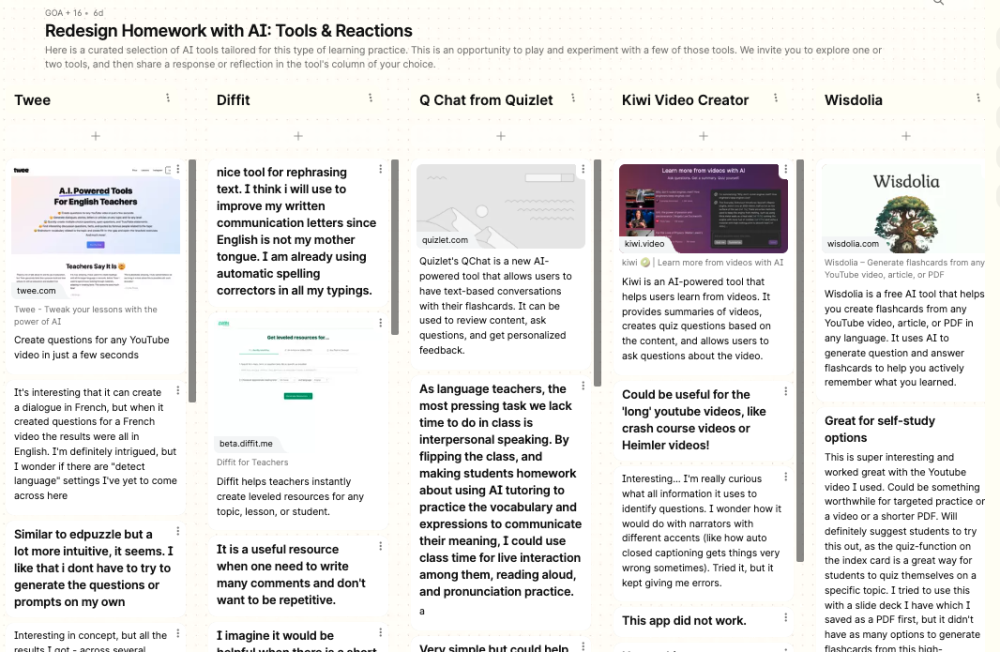
In our Assess for Learning with AI cohort, breakout rooms offer space for participant led discussions:
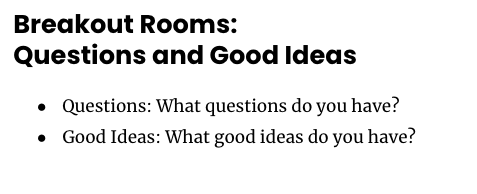
Taking a learning stance and sharing works-in-progress is vulnerable work, and it’s important work. But more than ever, this is a time to elevate the work of our colleagues and to create spaces to tell our learning stories. The current landscape is new to all of us; there is so much for us to learn from one another.
Join the Conversation and Dive Deeper
We’re interested in all the ways you’re taking a learning stance in the age of AI and all the ways you’re designing for student-centered experiences aligned to enduring priorities. What is something you’re trying? What have you created or experienced with your students? We would love to feature your story of impact. Click here to submit your own story via text or video.
Additionally, we invite you to join Redesign Homework with AI, a two to three hour asynchronous course beginning December 4. It reflects what we’re learning from this community and invites participants to name priorities, to design for student-centered approaches, and to learn from one another.
For more, see:
- How Schools Can Elevate Their AI Strategy: Essential Building Blocks
- How AI Can Support Agency in Our Students, and in Us
- Embracing Technology to Strengthen Human Connections in Schools
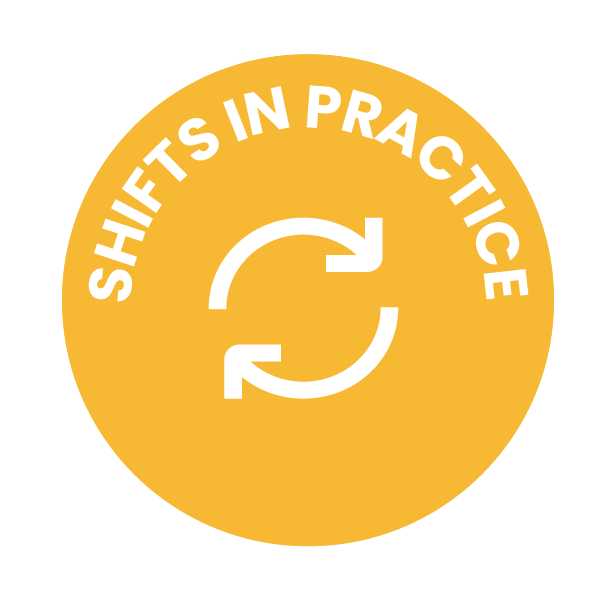
This post is part of our Shifts in Practice series, which features educator voices from GOA’s network and seeks to share practical strategies that create shifts in educator practice. Are you an educator interested in submitting an article for potential publication on our Insights blog? If so, please read Contribute Your Voice to Share Shifts in Practice and follow the directions. We look forward to featuring your voice, insights, and ideas.
GOA serves students, teachers, and leaders and is comprised of member schools from around the world, including independent, international, charter, and public schools. Learn more about Becoming a Member. Our professional learning opportunities are open to any educator or school team. Follow us on LinkedIn and Twitter. To stay up to date on GOA learning opportunities, sign up for our newsletter.
